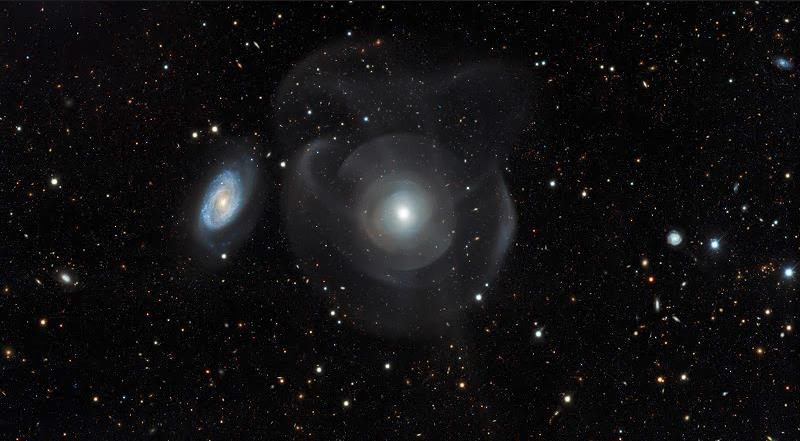Dark Energy Survey publishes a catalog of almost 700 million astronomical objects
This Thursday (01/14), Dark Energy Survey (DES), a global collaboration which includes Fermilab, the National Center for Supercomputing Applications (NCSA), NOIRLab and the e-Astronomy Inter-Institutional Laboratory (LIneA), made its catalog of images and astronomical data collected over six years with almost 700 million astronomical objects public.
Considered one of the largest astronomical catalogs released publicly by now, DR2, as the second public release of DES data is called, is a collection of images and objects identified in the scientific project with the purpose to understand the accelerated expansion of the universe and the dark energy phenomenon, covering 5,000 square degrees in the Southern Hemisphere (one eighth of the entire sky).
According to LIneA, DR2 will enable further research, such as the possible discovery of new objects in the Solar System and the investigation of the nature of the first galaxies, which may explain how the first stars in the Universe were formed, in addition to important links about dark matter.
To reach the number of almost 700 million astronomical objects, DR2 was based on the 400 million objects cataloged with the previous data release of the research, or DR1, improving the quality and the estimation of the matter distribution in the Universe. The collected data will be made available in thousands of images of the sky, as well as in the format of catalogs of the objects related to these images.
Astronomical researchers from all over the world can access this unprecedented data and mine it to make new discoveries about the universe, complementary to the studies in progress with the collaboration of the Dark Energy Survey. The full data release is on-line and available to the population to explore and obtain their own insights.
DR2 has a great effort from the e-Astronomy Inter-Institutional Laboratory as a platform where the user can access the added images of the DES survey, the catalogs of objects and maps, in addition to the possibility to search the main catalogs of DR1 and DR2.
“The public availability of the Dark Energy Survey data from six years, known as DR2, is another important step in the implementation of an Astronomical Data Center in Brazil. We have already done this for another important survey - the Sloan Digital Sky Survey for over 10 years - and we are claiming to host the data from the Legacy Survey of Space and Time, which will make a film of half of the sky for 10 years recording variations in brightness and position of objects, in addition to a census of the objects in the solar system”, Luiz Nicolaci da Costa, director of LIneA, said.
According to him, one of the biggest benefits of these archives in LIneA is having the data close to the LIneA processing infrastructure and the supercomputer Santos Dumont to facilitate the scientific analysis by Brazilian researchers, avoiding transfer of large volumes of data over international connections or depend on access to computer centers in other countries.
The complete DR2 data is on-line and available for the population to make their discoveries on DES site
e o público faça suas descobertas no site do DES.
